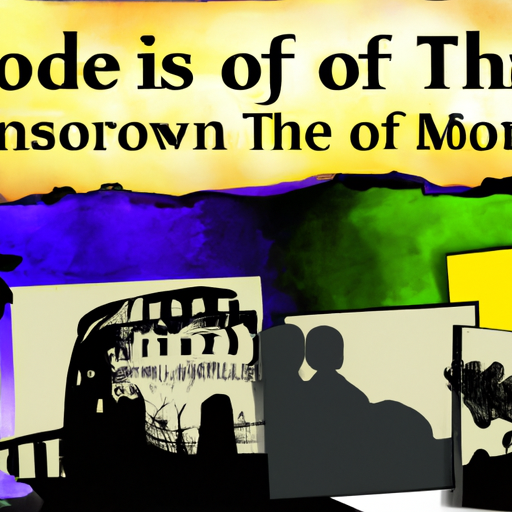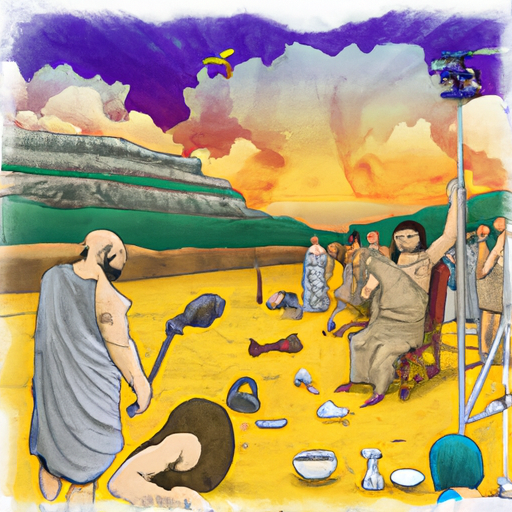Exploring the History of China’s Dynasties: What Dynasty is China in Now?
Unlock a journey of exploration and delve into the depths of Chinese antiquity! Uncover the secrets of its past and uncover the present-day dynasty! A thrilling adventure awaits!

Delve into the past of China and explore the ancient dynasties that have formed its culture. From the Xia Dynasty, said to be the very first dynasty in Chinese history, to the Qin Dynasty which forged a unified Chinese nation-state, to the Tang Dynasty with its unprecedented level of prosperity and cultural progress, to the Ming Dynasty bringing stability and technological advancement – traverse this long road of time by visiting some of China’s most iconic historical sites such as The Forbidden City in Beijing, The Great Wall of China, or The Terracotta Warriors in Xi’an. Uncover secrets from centuries ago for a deeper comprehension of current Chinese culture. Embark on an exploration and uncover all that Chinese history has to offer!
.
Introduction

A mysterious fifth chapter in the saga of a grand and illustrious past has begun, with the People’s Republic of China emerging as the reigning dynasty. Since 1949, when the Communist Party of China emerged triumphant from its civil war against the Kuomintang, China has been catapulted into an era of unprecedented economic development and modernization – its influence reverberating far and wide across the global stage. Befitting its status as a one-party socialist state, the PRC now holds sway over 22 provinces, five autonomous regions, four direct-controlled municipalities (Beijing, Tianjin, Shanghai and Chongqing) as well as two special administrative regions (Hong Kong and Macau) that enjoy a large degree of autonomy.
– Overview of the History of Chinese Dynasties
A plethora of complexity and tumult surrounds the Chinese dynasties, a chronicle that has spanned thousands of years. Beginning with the Xia Dynasty, which reigned from around 2070 to 1600 BC, the timeline is divided into distinct phases, each punctuated by the emergence and fall of different lineages. Afterward came the Shang Dynasty (1600–1046 BC) and then the Zhou Dynasty (1046–256 BC), both of which saw China extend its boundaries and grow in culture.
In 221–206 BC, the Qin Dynasty unified China for the first time and established a centralized imperial government. This was followed by the Han Dynasty (206 BC – 220 AD), which built upon this foundation while also introducing new technologies such as papermaking and gunpowder. In 220–280 AD, a period known as The Three Kingdoms Period ensued, during which three rival states clashed until it was reunified by the Jin Dynasty (265–420 AD).
The Sui Dynasty (581–618 AD) then brought about another reunion under one ruler; however, it did not last long. It was succeeded by the Tang Dynasty (618–907 AD), often remembered as one of China’s most illustrious eras with advancements in artistry, literature, technology and commerce. Next up was the Song Dynasty (960–1279 AD), which furthered progress in these domains plus agriculture and engineering.
The Yuan Dynasty (1271–1368 AD), founded by Kublai Khan, saw Mongolia dominate East Asia while exchanges occurred with other countries such as Japan and Korea. Subsequently came the Ming Dynasty (1368–1644 AD) that restored Chinese rule over its grounds but met opposition from foreign powers like Portugal and Britain during its later years. Finally, prior to 1911 when an uprising led by Sun Yat-sen overthrew it, there was the Qing dynasty (1644–1911 AD).
Today’s Chinese people take pride in their lengthy history despite its periods of unrest; this heritage has had an impact on modern Chinese culture that can still be witnessed today.
– What Was the Last Dynasty in China?
A time of great transformation had come upon China, with a new period of modernity taking shape. The last dynasty in the nation’s history, the Qing Dynasty, had been in power from 1644 until 1912. Founded by the Manchu people who had conquered China through a series of wars and made Beijing their capital, this era was marked by significant advances in science, technology, art and culture. Unfortunately, internal strife and foreign invasions led to the weakening of the Qing Dynasty and ultimately its downfall. In 1911, a revolution led by Sun Yat-sen saw it replaced by a republican government, thus bringing an end to imperial rule in China.
– How Has the Current Chinese Dynasty Impacted History?
A pervasive, far-reaching influence has been exerted by the Chinese dynasty throughout history. From the Qin Dynasty in 221 BC to the present People’s Republic of China, which was established in 1949, world events have been shaped and impacted by Chinese dynasties.
The Qin Dynasty is credited with unifying China for the first time and establishing a centralized government system, which became known as imperial rule and was adopted by later dynasties. The Han Dynasty (206 BC – 220 AD) lasted over 400 years and Confucianism spread throughout China during this period, leaving a lasting impression on Chinese culture and politics.
The Tang Dynasty (618–907 AD) saw Buddhism brought from India to China, with considerable effects on art, literature, philosophy, and religion. In addition, technology such as printing presses and gunpowder weapons were developed during the Song Dynasty (960–1279 AD), while trade increased with countries like Japan and Korea.
The Ming Dynasty (1368–1644 AD) saw further technological advancements including movable type printing which allowed for mass production of books, newspapers, etc., as well as an expansion of maritime trade with Europe resulting in greater cultural exchange between East and West.
The Qing Dynasty (1644–1911 AD) experienced a decrease in power due to internal conflict along with external pressure from Western powers searching for access to Chinese resources through unequal treaties. This era also saw an influx of foreign immigrants into China that still affects its population structure today.
Continuing many aspects of its predecessors while introducing new policies such as economic reform that has led to rapid growth since 1949, today’s People’s Republic of China is one of the largest economies in the world while still preserving its traditional culture and values inherited from past dynasties. Evidently each successive Chinese dynasty has left its mark on history both domestically and internationally.
– How Has Chinese Culture Evolved Throughout Different Dynasties?
managed to remain largely intact. Even today, one can still see evidence of the ancient traditions and beliefs in modern Chinese culture.
Awe-inspiring and captivating, Chinese culture has evolved through centuries of metamorphosis. From the Xia dynasty’s feudal states and clans with their unique customs and beliefs to the Shang dynasty’s advances in writing, art, music, and religion; from the Zhou dynasty’s Confucian principles to the Qin dynasty’s unification; from the Han dynasty’s scientific and technological advancements to the Tang dynasty’s flourishing of Buddhism; and finally from the Ming dynasty’s explosion of creativity to its Confucian revival – each period has left its mark on Chinese culture. Even today, traditional values such as ancestor worship are still present in modern life. It is truly remarkable how much this culture has endured throughout time without losing its essence.
– The Influence of Ancient Chinese Dynasties on Modern China
A deep-rooted impact on modern China is the result of ages past, from the Qin to the Qing. This unified system of governance, set in place by the first imperial dynasty – the Qin (221–206 BCE) – has been felt throughout the centuries. The Confucianism that was adopted as state ideology during this time still lingers today. Then came the Han Dynasty (206 BCE–220 CE), an era that saw tremendous progress in literature, art and technology, as well as expansion of trade routes across Asia. Paper money and a standardized writing system were introduced during this period. The Tang Dynasty (618–907 CE) was marked by great wealth and prosperity, with a flourishing economy and international presence; remembered for its achievements in poetry and art, science and medicine. Lastly, there was the Qing Dynasty (1644–1912 CE): economic growth and territorial expansion accompanied by internal strife due to foreign invasions – all contributing to modern China’s identity today.
conclusion

A newfound era of the People’s Republic of China has been in effect since 1949, when Mao Zedong proclaimed its formation. This period signals the termination of China’s dynastic past and the inauguration of modern Chinese history. A remarkable transformation has thus taken place, leaving a lasting impression on the nation.
.
Some questions with answers
Q1: What dynasty is China in now?
A1: The current dynasty in China is the People’s Republic of China, which has been in power since 1949.
Q2: How long has the People’s Republic of China been in power?
A2: The People’s Republic of China has been in power since 1949.
Q3: What was the previous dynasty in China?
A3: The previous dynasty in China was the Qing Dynasty, which ruled from 1644 to 1912.
Q4: Who founded the People’s Republic of China?
A4: The People’s Republic of China was founded by Mao Zedong and other revolutionary leaders in 1949.
Q5: What major events happened during the Qing Dynasty?
A5: During the Qing Dynasty, there were many major events such as the Opium Wars, the Taiping Rebellion, and the Boxer Rebellion.




